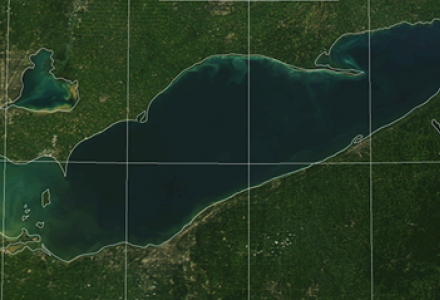The work of Great Lakes protection and restoration is influenced by the confluence of people and businesses that call this region home and recognize the unparalleled gift of the glaciers to our pursuit of happiness. Collectively we agree on the importance of protecting the Lakes. Important progress has been achieved. And much is left to do to deliver the promise of sustaining the integrity of the waters of the Great Lakes.
These thoughts are primarily a reflection on attending the 11th annual Great Lakes Restoration Conference of the Healing Our Waters coalition and celebrating the 60th anniversary of the Great Lakes Commission and Great Lakes Fishery Commission in Chicago from Sept. 28- Oct. 1.
For the last 10 years, I have attended these meetings. I have witnessed a broadening of participation, a sharply honed focus and the fruits of collaboration ripen. Greatness must always be renewed and these gatherings are rich in discussions that pollinate important ideas and priorities for collective action.

I was most impressed by the session on Environmental Justice, which underscored the urgency that more must immediately be done to recognize and include – at the very foundation of Great Lakes protection, not as an add-on or afterthought – populations historically sidelined in the restoration of Great Lakes and the rivers and streams that nourish them. The tweetable takeaway is that #BlackLivesMatter to the #GreatLakes and the #GreatLakes matter to #BlackLives.
The legacy of pollution and inaccessibility to Great Lakes, rivers and tributaries is systemically linked to poverty, poor health, and inequality. A politically privileged region, the Great Lakes benefits from leaders endorsing protection and restoration efforts regardless of political ideology or affiliation. These efforts to improve water quality and remediate toxic Areas of Concern can be further leveraged to revitalize communities while ensuring residents retain those benefits and are not displaced through aggressive gentrification. More inclusive public engagement can enhance the access of Great Lakes urban centers to clean and abundant water for work and play.
Second, it is clear that water infrastructure needs investment and innovation. Broken water mains, sewage backups and overflows, and Pelee Island and Toledo’s 2014 drinking water crisis underscore the urgent need for capital improvements, sustainable design and proactive maintenance. Out of sight, out of mind is too often how our sanitation system and services are thought of --- until, of course, we can’t take a shower, swim at the beach or drink the water. Storm intensity is increasing and dollars and anticipatory policies are needed to meet this real and urgent challenge.

President George W. Bush convened the Great Lakes Regional Collaboration Strategy that engaged more than 1,500 people from the science, industry, agriculture, conservation communities and beyond to set priorities for Great Lakes restoration and protection. For the last seven years, the Great Lakes Restoration Initiative catalyzed incredible progress toward achieving many of these goals, including preventing and controlling aquatic invasive species, accelerating remediation of toxic Areas of Concern, protecting and restoring habitats and identifying indicators to track the system's health and progress. A steep deficit remains for adequate infrastructure that reliably delivers clean drinking water, conveys and treats sewage and reduces polluted runoff. Closing the water infrastructure deficit requires capital investment as well as a more integrated approach to water, sanitation, transportation and building planning, along with design and rehabilitation that promotes the resilience necessary to manage water in drought and deluge.
Third, it is evident that investment in Great Lakes protection is working and must continue. The governments have always invested in this great region and focused efforts are working and require ongoing support to ensure our kids and future generations can safely access healthy lakes, great jobs and vibrant waterfront communities.

Finally, the Chicago meetings reinforced that collaborative partnerships with inclusive engagement work as long as adequate resources are available and leveraged throughout all sectors of civil society. Partisan bickering is distracting, dangerous and expensive. More unites us than divides us. Healthy competition drives innovation toward our common goals and standards.
How is this done? The rich tapestry of organizations, governments, universities, industries, and enthusiasts must remain connected, listen to each other, and never give up. Binational commitments are essential to fund efforts to achieve the aspiration of protecting and restoring the physical, biological and chemical integrity of the waters of the Great Lakes for today and all those who will inherit this Sweetwater gift. It takes us all to make the waves and ride the tide toward healthy lakes and healthy lives.
Great Lakes Now, a project of Detroit Public Television, broadcast sessions of the Great Lakes Commission and Healing Our Waters meetings.

Dereth Glance served as an IJC US Commissioner from July 2011 to September 2016.



